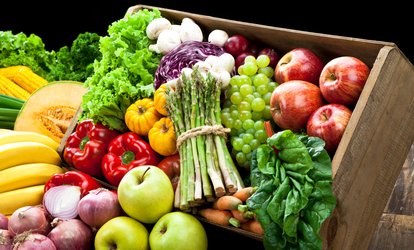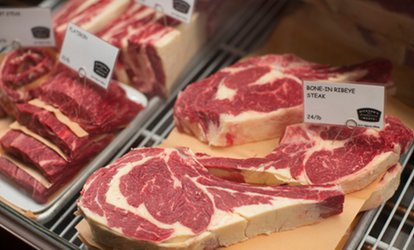UNDERSTANDING OZONE
When most people think of ozone, they picture the layer high in the earth's outer atmosphere that protects us from the sun's ultraviolet rays, but this bluish gas, which sometimes can be detected as a fresh smell after a thunderstorm, is actually a valuable tool with a variety of down-to-earth uses.
Ozone gas (O3) is a naturally occurring tri-atomic form of oxygen (O2) that is formed as sunlight passes through the atmosphere or when streaks through the air. It can be generated artificially by passing high voltage electricity through oxygenated air (corona discharge), causing oxygen to break apart and recombine in the tri-atomic form.
Ozone gas (O3) is a naturally occurring tri-atomic form of oxygen (O2) that is formed as sunlight passes through the atmosphere or when streaks through the air. It can be generated artificially by passing high voltage electricity through oxygenated air (corona discharge), causing oxygen to break apart and recombine in the tri-atomic form.
Because oxygen naturally seeks its normal state, ozone is an unstable, highly reactive form of the gas. As an oxidizer, it is 51 times as powerful than chlorine, the oxidizer most commonly used by most food processors, and 3,000 times faster at killing bacteria and other microbes. Ozone is effective as a disinfectant at relatively low concentrations and does not leave toxic by-products similar to those related to chlorination.

For more than a century, ozone has been used in Europe for purifying drinking water and is currently used in the United States for purifying bottled water and decontaminating cooling towers. The cities of Los Angeles, Dallas, and Las Vegas all currently use ozone to purify their water supply.
Ozone's reactive nature takes two different chemical pathways, direct and indirect. In the direct pathway, ozone reacts with unsaturated bonds and causes them to split, especially under acidic conditions. The indirect pathway requires initiators that break down the ozone even more rapidly.
Ozone's reactive nature takes two different chemical pathways, direct and indirect. In the direct pathway, ozone reacts with unsaturated bonds and causes them to split, especially under acidic conditions. The indirect pathway requires initiators that break down the ozone even more rapidly.
Compared to chlorine, ozone offers several advantages for food and beverage processors or anyone who wants to sanitize materials or surfaces. Chlorine has traditionally been the sanitizer of choice in the food processing industry, but experts share a growing concern about the dangerous byproducts such as trihalomethanes or dioxins produced when chlorine reacts with organic matter in the water. These substances are known carcinogens and are regulated in drinking water by the U.S. Environmental Protection Agency.

Ozone, on the other hand, is simply oxygen in an unstable and highly reactive form. It naturally tends to seek its normal state, exhibiting a short half-life as it reverts to oxygen fairly rapidly. When it reacts with organic matter, it does not form any toxic byproducts and the water in which it was delivered can be filtered and reused. Because it is so highly reactive, ozone is effective at controlling or removing biofilms that sometimes form on processing equipment. It can also be used to reduce biological oxygen demand (BOD), chemical oxygen demand (COD), and turbidity or other residues in water.
While chlorinated wash systems require transport and storage of potentially hazardous toxic chemicals, ozone is unique in that it is generated onsite from oxygen and can be produced on demand with no storage required. When the generator is turned off, there are no dangerous substances on the premises. While the oxidation reduction potential (ORP) of ozone is affected by the amount of organic matter or chemicals in the water, its ORP is not as sensitive to changes in pH as that of chlorine.

Ozone also has a variety of uses in food and beverage processing plants. Water containing low concentrations of ozone gas can be sprayed onto processing equipment, walls or floors to both remove and kill bacteria or other organic matter that may be present. Because it has such a short half-life, ozone does not build up on surfaces the way detergents can if not removed by proper rinsing.
Ozone can also be injected or dissolved in process waters of all kinds to provide chilling, fluming, rinsing or washing of food products such as meat, poultry, seafood, fruits or vegetables.
Ozone can also be injected or dissolved in process waters of all kinds to provide chilling, fluming, rinsing or washing of food products such as meat, poultry, seafood, fruits or vegetables.
On June 23, 2001, the U.S. Food and Drug Administration officially granted GRAS (Generally Recognized As Safe) status to ozone for use in food contact applications. While there was already interest among food processors in the use of ozone for killing microorganisms and sanitizing equipment, the FDA approval opened up the opportunity for food processors to begin putting this exciting technology to use in their plants. Today, meat, poultry and seafood and produce plants are using ozonation as a food safety measure.

For many years now, food and beverage processors in the United States, Mexico, Canada, Latin America, Europe, Africa, and Asia have installed working ozone wash systems and the results indicate that bacterial plate counts are lower with ozone as compared to chlorinated systems. Fresh food when washed with ozone exhibit a longer shelf life than similar products processed using chlorine.
Ozone Safe Food has theorized that ozone reacts with the enzymes released from damaged lettuce cells when this vegetable is sliced or shredded. Because the enzymes seem to be deactivated, natural browning is delayed, not only enhancing shelf life but also preserving color and flavor of the product. Vegetable and fruit tissues are not injured during contact with ozone water.
Ozone is also proving to be compatible with other disinfectants.
In light of continued outbreaks of food-borne illness and more recent food security concerns in the United States and internationally, as well as questions about the relative safety of chlorine, ozone is certainly the d
esirable solution for enhancing not only the safety but also the quality of the world food supply.
Ozone Safe Food has theorized that ozone reacts with the enzymes released from damaged lettuce cells when this vegetable is sliced or shredded. Because the enzymes seem to be deactivated, natural browning is delayed, not only enhancing shelf life but also preserving color and flavor of the product. Vegetable and fruit tissues are not injured during contact with ozone water.
Ozone is also proving to be compatible with other disinfectants.
In light of continued outbreaks of food-borne illness and more recent food security concerns in the United States and internationally, as well as questions about the relative safety of chlorine, ozone is certainly the d
esirable solution for enhancing not only the safety but also the quality of the world food supply.






